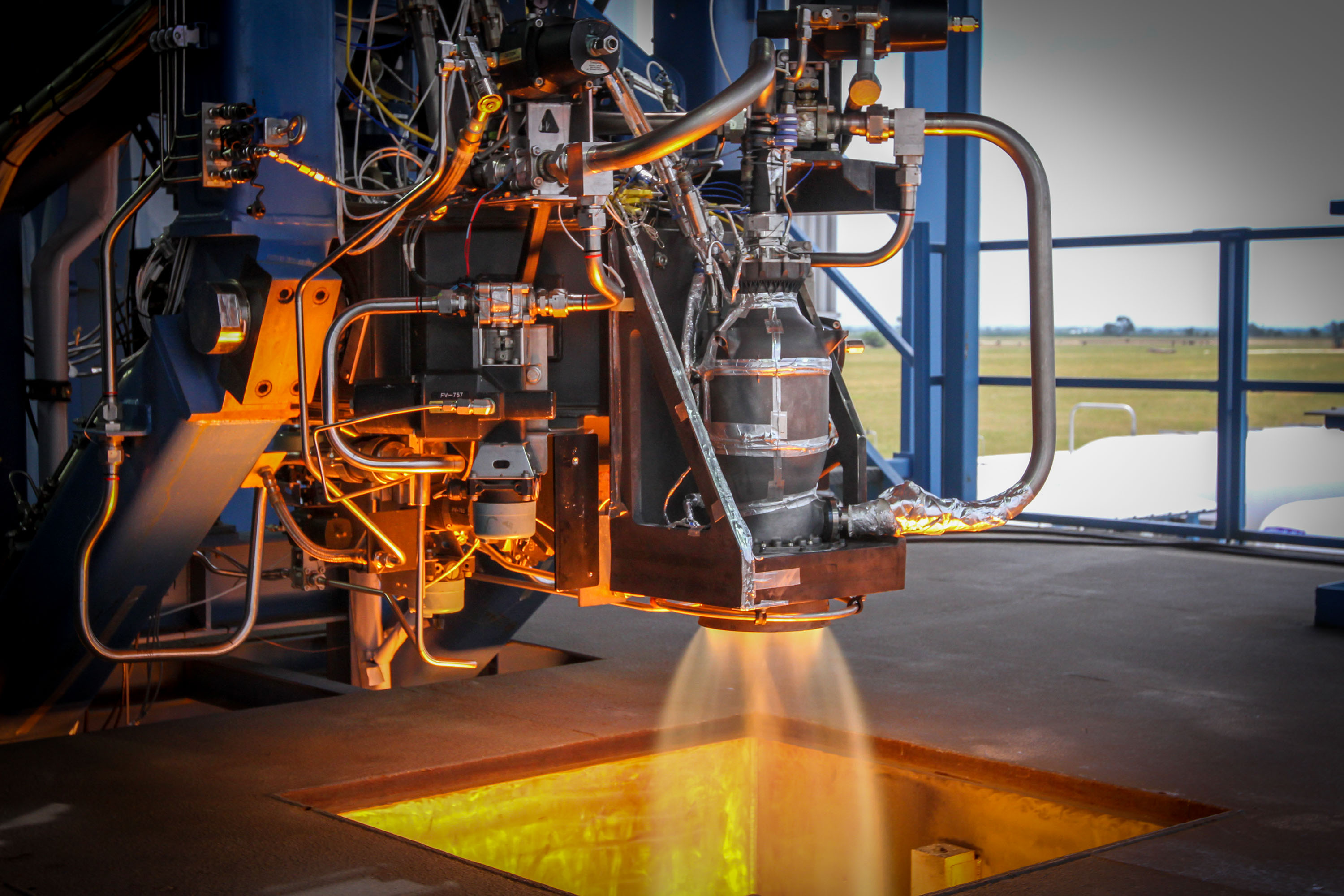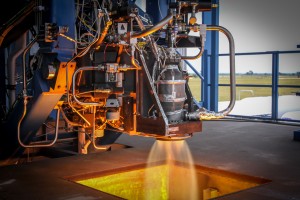May 28, 2014 – The Dragon supply capsule built by SpaceX has been undergoing tests to make it useful for human crew use as an alternative to Russia’s Soyuz. But to make this happen SpaceX is following a rigorous series of tests. One of these represents a true advancement in space capsule engineering – the inclusion of a propulsion system that not only ensures a human crew an increased margin of safety, but also allows for controlled descent to ground landings.
This month SpaceX completed the test of what they call the SuperDraco thruster. This is the Dragon capsule launch escape system. But it also provides the capsule with maneuvering capability while in orbit and during reentry. The SuperDraco is manufactured using 3D printing, a new first for rocket thrusters. The thruster technology is integrated into the Dragon capsule with eight on-board engines built into the sidewalls. Maximum thrust from these eight equals 120,000 pounds. That’s enough to carry a human crew to safety if an emergency occurs in a launch.
In the past, before the age of the Space Shuttle, gantry escape rockets were mounted above human crewed space capsules as the means to provide a margin of safety in a failed launch. The rockets were designed to fire once to pull the capsule away from the rocket. Once clear the gantry rocket would jettison and a parachute would deploy to bring the crew safely back to earth. Deployment of this emergency system only could occur in the earliest stages of the launch. After that the escape rocket provided no margin of safety.
In the Shuttle, escape rockets were abandoned exposing human crews to potential catastrophes as we saw when the Challenger was destroyed when an O-ring on a solid booster rocket failed. The Shuttle also was mounted on the side of the rockets and external fuel tank that helped it achieve orbit, another reason a gantry escape system could not be implemented.
Dragon with the SuperDraco engines on board doesn’t work this way. The integrated engines push the space capsule away from danger. The engines can be fired any time during ascent and even if one fails the redundancy built into the Dragon capsule allows the on-board crew a margin of safety to fly the capsule to a controlled landing.
Because the SuperDraco is used for escape, for in orbit maneuvers, and for descent, like thrusters on satellites, it can be switched on and off. But unlike traditional thrusters in space, the SuperDraco gives the crew of a Dragon space capsule throttle control to vary the amount of thrust applied.
Kudos to SpaceX in their quest to turn Dragon into the first commercial spacecraft to take human crews into low-Earth orbit.









